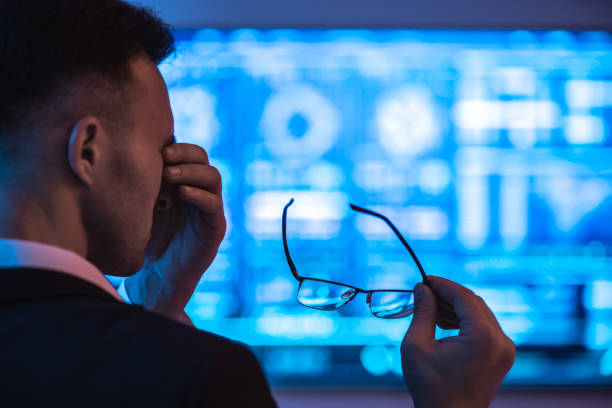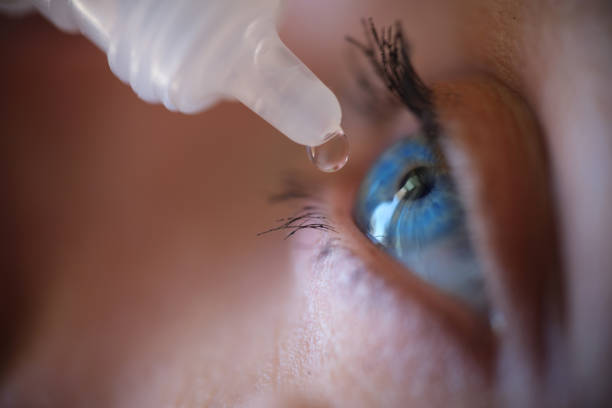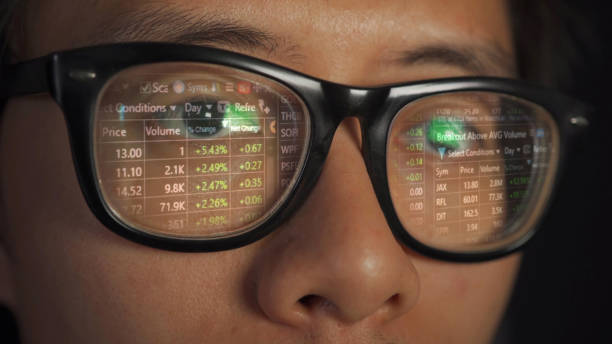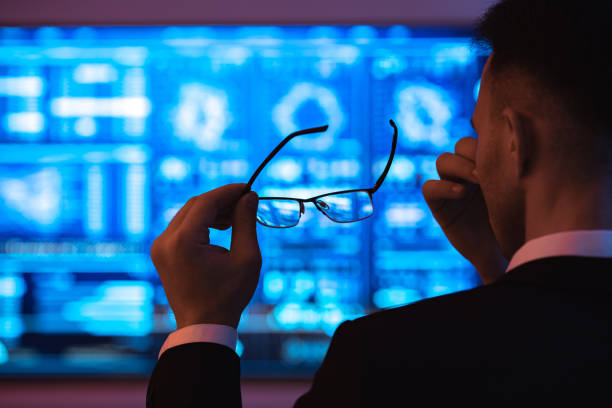Spending long hours in front of screens has become a normal part of daily life. Whether you’re typing away on a laptop, checking your phone, or watching back-to-back episodes of your favorite show, digital devices are nearly impossible to avoid. But have you ever stopped to think about how all that screen time might be affecting your eyes?
Too much time staring at screens can lead to eye strain, dryness, and even blurry vision. The good news? There are easy ways to reduce the impact.
In this post, we’ll look at how digital screens affect your vision and share simple, effective tips to help you protect your eye health.
What Is Digital Eye Strain?
Digital Eye Strain, also known as Computer Vision Syndrome, refers to a collection of eye and vision-related problems. It occurs when you spend extended periods staring at digital screens—whether on computers, tablets, or smartphones—without taking regular breaks. Over time, this constant screen use can lead to symptoms such as tired eyes, blurred vision, dryness, and general discomfort. It’s a common issue in our digital age but can be managed with simple habits and eye care practices.
Common Symptoms of Digital Eye Strain
Spending too much time on screens can lead to several uncomfortable symptoms. These signs of digital eye strain can affect your daily life and make it harder to focus. Watch out for the following:
- Tired or sore eyes
- Blurry vision
- Headaches
- Dry eyes
- Neck and shoulder pain
According to the American Optometric Association, people who use digital screens for two or more continuous hours are more likely to experience these symptoms. Taking breaks and practicing good screen habits can help reduce these effects.

How Digital Screens Affect Your Eyes
1. Reduced Blinking
When you focus on a screen, you tend to blink less often than usual. Blinking is important because it spreads tears across your eyes, keeping them moist and comfortable. A lower blinking rate can cause dryness, irritation, and even a burning feeling in your eyes. Over time, this can lead to more serious discomfort if not addressed.
2. Blue Light Exposure
Digital screens give off blue light, which is a type of high-energy, short-wavelength light. While some blue light is natural, too much from screens—especially at night—can affect your eyes and overall health. Too much blue light exposure can:
- Contribute to digital eye strain
- Disrupt your natural sleep cycle
- Possibly damage retinal cells over time
According to Harvard Medical School, blue light exposure during the evening can lower melatonin levels. Melatonin is the hormone that helps you fall asleep, so this disruption can make it harder to get a good night’s rest (source).
3. Close Viewing Distance
People tend to hold phones and tablets much closer to their eyes than books or other printed materials. This short viewing distance forces your eye muscles to work harder to stay focused. Over time, this extra effort can lead to eye strain, blurred vision, and general discomfort. Holding screens too close can also make it harder for your eyes to relax, especially during long periods of use.
Long-Term Effects of Too Much Screen Time
Can Screen Time Cause Permanent Damage?
Right now, there’s no strong proof that looking at screens causes permanent eye damage. However, using screens for long periods can lead to ongoing eye strain, which may affect your daily comfort and health. Common issues linked to chronic eye strain include:
- Trouble focusing
- Frequent headaches
- Eye fatigue that lowers productivity
Over time, too much screen use—especially up close—may also increase the risk of myopia (nearsightedness). This is a growing concern for children and teens. A study published in JAMA Ophthalmology found a connection between higher screen time and rising rates of myopia in younger age groups (source).

How to Protect Your Eyes from Digital Screens
The Good News?
The good news is that there are simple and effective steps you can take to reduce eye strain and protect your vision. By making small adjustments to your screen habits and environment, you can keep your eyes feeling comfortable and healthy.
1. Follow the 20-20-20 Rule
One simple way to reduce eye strain is by following the 20-20-20 rule. Every 20 minutes, take a 20-second break and look at something 20 feet away. This gives your eye muscles a chance to relax, reducing fatigue and helping prevent strain. Regular breaks like this can make a big difference in how your eyes feel throughout the day.
2. Adjust Screen Settings
To reduce eye strain, it’s important to adjust your screen settings. Make sure your screen:
- Is set to a brightness level that’s comfortable for your eyes
- Has good contrast between text and background
- Uses a blue light filter (many devices have a “night mode” option)
These simple adjustments can help reduce glare, making it easier on your eyes and helping to prevent strain, especially during long screen sessions.
3. Keep the Right Distance
To reduce eye strain, it’s important to keep the right distance between your eyes and your device. Hold your phone or tablet at least 16 to 18 inches away from your eyes. When using a computer, try to sit about 20 to 28 inches away from the monitor. Also, make sure the top of the screen is at or just below eye level. This helps prevent your eyes from straining while trying to focus on the screen.
4. Use Artificial Tears
If your eyes feel dry or irritated from prolonged screen use, consider using preservative-free artificial tears. These eye drops help keep your eyes moist and can provide relief from discomfort. You can find these drops at most pharmacies, and they’re a simple solution to keep your eyes feeling fresh throughout the day.
5. Blink More Often
It might sound simple, but blinking more often can make a big difference in reducing eye strain. When you focus on a screen, your blink rate often slows down. Try to blink slowly and deliberately every few minutes to refresh your eyes. This helps spread moisture across your eyes, preventing dryness and irritation.
Best Tools and Products to Reduce Digital Eye Strain
Blue Light Glasses
Blue light glasses are designed to filter out harmful blue light from digital screens, which can help reduce eye strain. These glasses are especially useful if you spend long hours in front of a screen. By blocking blue light, they can make it easier on your eyes, especially during evening use. Some popular brands of blue light glasses include:
Screen Filters
Another option to reduce blue light exposure is to use screen filters. These filters can be added to your laptop, tablet, or phone to block harmful blue light, helping to reduce eye strain. They are easy to apply and provide an extra layer of protection for your eyes, especially if you spend long hours using digital devices.
Humidifiers
A dry environment can make eye strain even worse, especially during the winter months when indoor air tends to be drier. Using a humidifier in your room helps add moisture to the air, which can keep your eyes from becoming dry and irritated. By improving the humidity level, a humidifier can help keep your eyes more comfortable throughout the day.
Tips for Kids and Teens Using Screens
Children and teens are especially at risk for eye strain since their eyes are still developing. To help protect their vision, consider these helpful tips:
- Set time limits for non-school screen use to prevent excessive screen time
- Encourage outdoor playtime to give their eyes a break and expose them to natural light
- Ensure screens are held at the proper distance to reduce strain
- Use child-friendly blue light filters to protect their eyes from harmful light
The American Academy of Pediatrics recommends no more than two hours of recreational screen time per day for kids aged 2 to 5 (source).
When to See an Eye Doctor
If you experience ongoing discomfort or notice changes in your vision, it’s important to schedule an eye exam. An optometrist can:
- Check your overall vision and detect any underlying issues
- Recommend glasses with screen protection to reduce eye strain
- Suggest personalized solutions to address screen-related eye problems
Regular eye checkups are essential for maintaining long-term eye health, especially if you spend a lot of time using digital screens every day. Early detection can help prevent more serious issues in the future.ey to maintaining long-term eye health, especially if you use screens daily.

Quick Checklist: Healthy Screen Habits
✅ Use the 20-20-20 rule
✅ Blink often
✅ Adjust screen settings
✅ Keep screens clean
✅ Maintain proper posture
✅ Get regular eye exams
✅ Use blue light filters or glasses
Final Thoughts
Digital screens are an essential part of modern life, but that doesn’t mean your eye health has to suffer. By adopting simple habits such as blinking more often, following the 20-20-20 rule, and adjusting your screen settings, you can enjoy using technology without straining your eyes.
Remember, your vision is valuable and worth protecting. Start by implementing just one of these helpful tips today, and gradually add more to your routine for better eye health.

